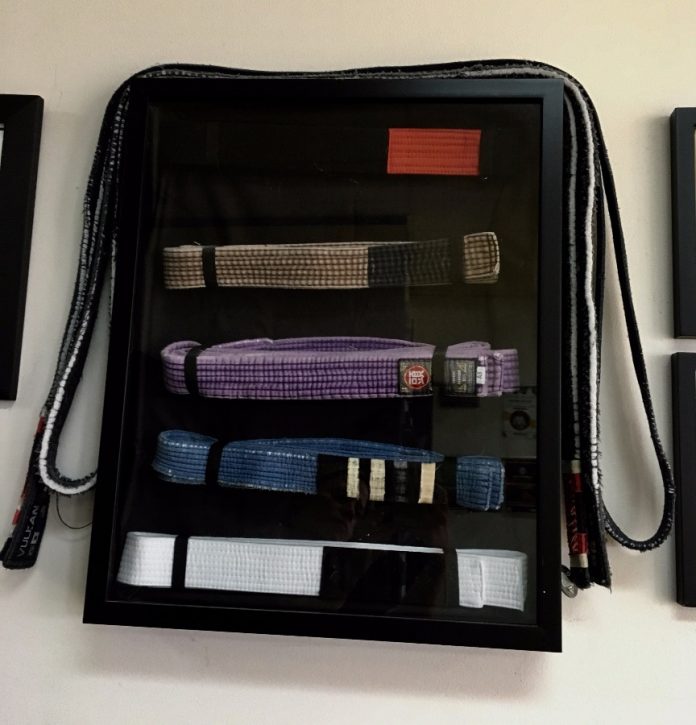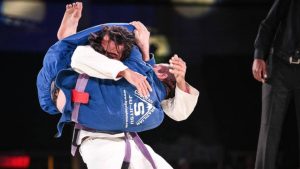
Brazilian Jiu-Jitsu is a martial art like no other, offering a multitude of approaches to any kind of practitioner involved in it. Whether it be the wrestler-type of an explosive athlete, the calm and cerebral conceptual guy, or the small and agile girl with the inch-perfect technique, they all have one thing in common – the power to apply their own approach when they roll on the mats.
So, what style should you use? Should you focus more on concepts or become an encyclopedia of techniques? How about specializing in a certain area of Jiu-Jitsu, whether it is a position, submission or a competition platform (Gi or No-Gi)?
Approaching Jiu Jitsu
Before getting lost in the vastness of the art that is Brazilian Jiu-Jitsu, make sure you are clearly aware of your level of proficiency (or lack of) on the mats. If you’re uncertain where you actually stand, your instructor should be your first choice when looking for advice. Turning you your favorite two striped white belt rolling buddy will most likely give you the answer you want to hear in terms of your level, but not the answer you need to hear in order to truly progress as a grappler.
Make sure you follow the well-known mantra of “mastering the basics first”, because it is going to take you further than any short-term sneaky quick fix that you dig up on Youtube or read on Reddit. Be honest with yourself if you truly want to progress through the ranks while gathering as much knowledge as you can.
Mastering technique
If you’re a white or blue belt, your best bet for progression in BJJ is to go by the aforementioned mantra. Just focus on learning the correct way to execute the techniques that are being taught at your academy. This is a point that I cannot stress enough – focus on what you’re an instructor is showing you, not the latest quasi-choke that someone pulled at a local tournament.
Yes, I’m aware that this is not what you want to read, and that you’re ready to entangle your self and your training partner in the latest animal guard demonstrated by Keenan Cornelius. However, when reality inevitably strikes, in the form of a higher belt on the open mat or highly technical opponent at a tournament, you’ll realize that Keenan actually had to learn the basics too. The sooner you accept that there’s no way around it, the better it is for your Jiu-Jitsu.
When at white belt level, there’s actually one thing that’s more important than techniques by themselves, and that is movement quality. Becoming comfortable in the basic movement patterns of BJJ, like the bridge, the technical stand up and the hip escape should be the foundational layer of your Jiu Jitsu journey. This doesn’t mean that you should spend an hour and a half shrimping around the mats, but make sure that when you train the technique of the class, you are able to recognize these movements and execute them correctly. As you develop muscle memory, your technique will benefit from the quality of the movement behind their execution.
At blue belt level, when you’re more comfortable on the mats and have an arsenal of techniques that you can rely on, it’s time to broaden your toolbox. There are two ways to do this – add in new techniques and focus on the different ways to get to the ones you’ve chosen to perfect. A great way to take your game to the next level is to start looking for connections between your favorite techniques and the most common BJJ positions, trying to work out different entries, chains of techniques and work on your timing.
Incorporating concepts
When you reach purple belt level you’ve started to gain an understanding of the art. By this time, you’ve most likely spent 4-5 years of sweat, injuries, and self-evolution on the mats, and you’re ready for the next step. Purple belt is the time when you figure out your style and your individuality comes to the forefront.
It’s important to note that your style isn’t set in stone and it should keep evolving as long as you train in Jiu-Jitsu. However, at purple belt, you get to toy with the broader approach to BJJ all the while shifting focus to what actually matters in BJJ – the details. Instead of just executing techniques and holding on for dear life in positions like the mount or side control, you get to understand the mechanics behind the human body.
The conceptual approach doesn’t mean that you stop doing techniques – an armbar is not going to be finished just by itself. However, knowing which direction to point the arm towards and how to use the correct power source to elicit the greatest leverage on the correct part of the joint will take you a step closer to perfect execution.
Going full circle
As long as you reach brown belt, the circle starts to go around again. You get to see the same movie, but this time you get to see it in Ultra HD Virtual Reality. This is the time when you return to the starting mantra but with all the knowledge you’ve gathered on the way. Your movement quality is flawless, you have a broad understanding of a vast array of techniques. You’re able to get to your favorite positions from everywhere, all the while looking like you know what all the lower belts (and even some of the folks at your level) are going to do before they even seem to know it. You understand the mechanics of the body and can apply a meaningful and orderly concept even to the most chaotic of scrambles.
Inevitably, if you’ve put in the time, and you’ve dedicated about a decade of your life, and endless athletic tape to Jiu Jitsu, you reach the black belt and the most miraculous thing happens – your Jiu-Jitsu journey now truly begins!
Invisible Jiu Jitsu – What Is It and 5 Most Effective Techniques
Jiu Jitsu Guy With No Takedown Skills in a Street Fight – FAIL












































